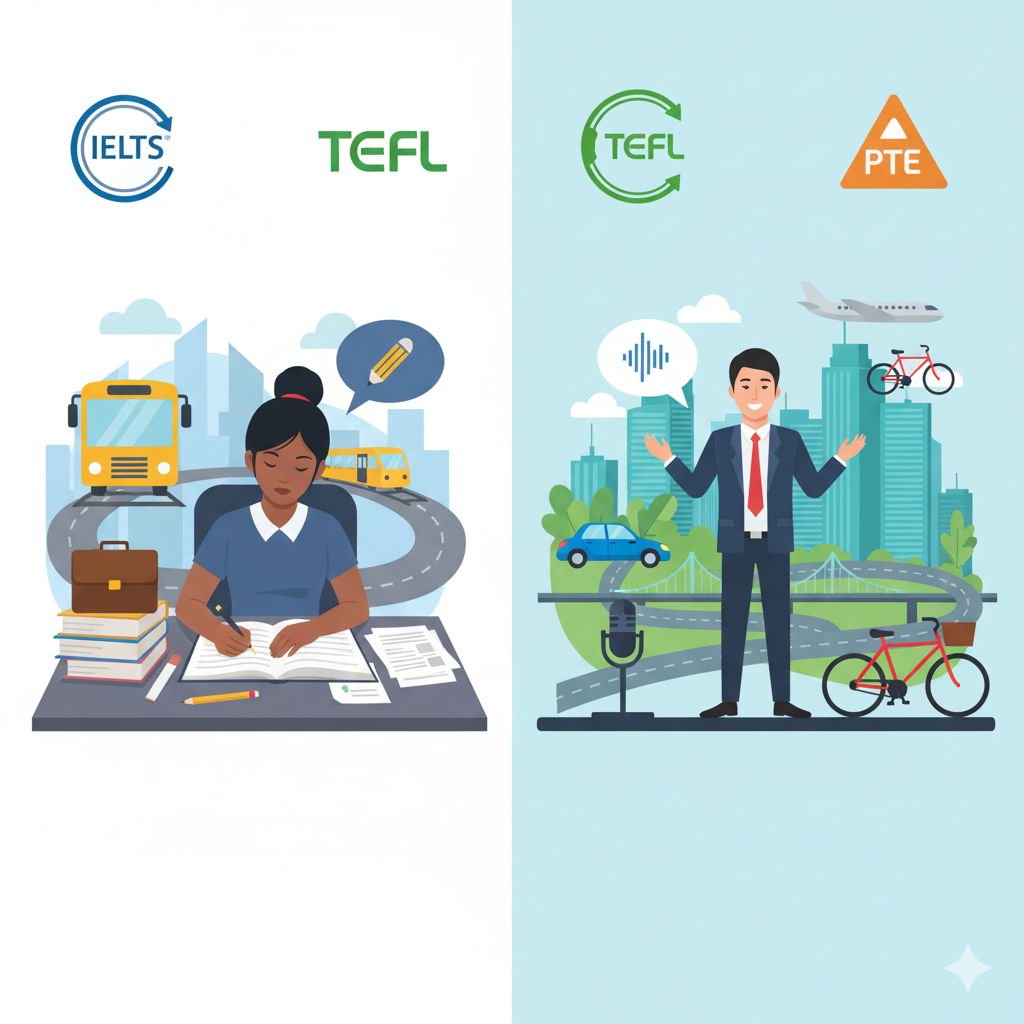
Transport and infrastructure are major themes in IELTS, TOEFL, and PTE exams, especially in Writing Task 2 essays and Speaking Part 3 discussions. Topics like public transport, traffic congestion, air travel, and urban planning often appear, and to score well, candidates must demonstrate strong control of collocations that make their language sound natural and academic. This post provides a comprehensive set of transport and infrastructure collocations, along with exercises and activities designed to strengthen your vocabulary, essay skills, and speaking fluency.
Transport & Infrastructure
Public transport vs private vehicles
- affordable fares → Affordable fares encourage more people to use public transport.
- traffic congestion → Expanding public transit reduces traffic congestion in cities.
- reliable services → Commuters choose public transport when services are reliable.
- overcrowded buses → Overcrowded buses discourage off-peak travel.
- car ownership → Rising car ownership increases demand for parking space.
- fuel efficiency → Improving fuel efficiency lowers household travel costs.
- public transport network → A dense public transport network boosts economic mobility.
- environmental impact → Private vehicles have a larger environmental impact per passenger.
- parking problems → Parking problems in city centres create planning challenges.
- transport subsidies → Transport subsidies help low-income commuters afford travel.
Traffic congestion and urban planning
- road expansion → Road expansion alone often fails to solve congestion long term.
- traffic jams → Regular traffic jams increase fuel consumption and commute stress.
- peak hours → Transit operators add services during peak hours to meet demand.
- alternative routes → Developing alternative routes can ease pressure on main roads.
- public transport investment → Public transport investment is crucial for sustainable cities.
- smart traffic systems → Smart traffic systems optimize signal timings to improve flow.
- urban design → Progressive urban design prioritizes pedestrians and cyclists.
- cycle-friendly infrastructure → Cycle-friendly infrastructure encourages healthier commuting choices.
- pedestrian zones → Pedestrian zones revitalize downtown areas and reduce emissions.
- transport policies → Transport policies must align with environmental and social goals.
Air travel and its environmental impact
- carbon emissions → Air travel’s carbon emissions are significant per passenger kilometer.
- frequent flyers → Frequent flyers contribute disproportionately to aviation emissions.
- fuel consumption → Newer aircraft reduce fuel consumption per seat.
- international tourism → International tourism supports many economies but increases emissions.
- low-cost airlines → Low-cost airlines have expanded access to air travel.
- aviation industry → The aviation industry is exploring sustainable aviation fuels.
- noise pollution → Noise pollution around airports affects nearby residential areas.
- flight delays → Flight delays frustrate passengers and disrupt schedules.
- global connectivity → Air travel is vital for global connectivity and trade.
- carbon offset programs → Carbon offset programs allow passengers to mitigate flight emissions.

Pingback: Essential Collocations for IELTS, TOEFL, and PTE: 10 Major Topics - Goat Guru English